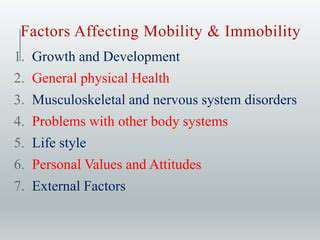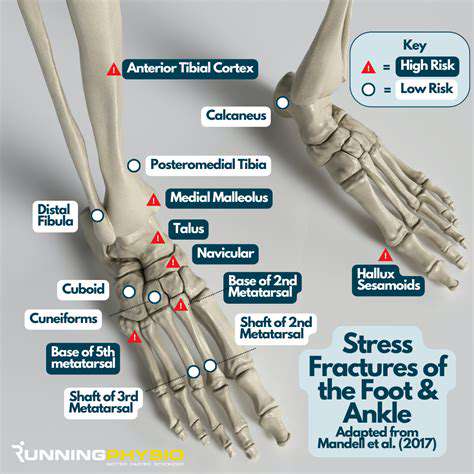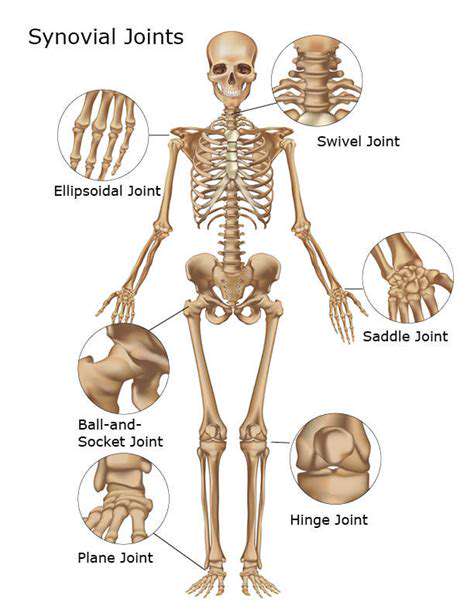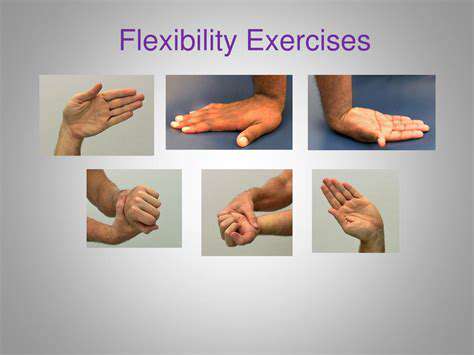How Hand Use Has Evolved Over Time
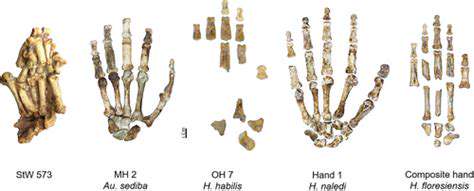
The Evolutionary Journey of the Hominin Hand
The hominin hand, a seemingly simple structure, holds a wealth of evolutionary history. Its development reflects a complex interplay of environmental pressures and biological adaptations, culminating in the unique dexterity and precision grip that defines our species. Understanding this journey is crucial to comprehending the broader story of human evolution.
Early hominins, such as Ardipithecus ramidus, exhibited a mix of arboreal and terrestrial adaptations. Their hands, while still retaining some features suited for climbing, show signs of evolving towards a more versatile, ground-based lifestyle. The morphology of these early hand fossils provides insights into the transition from a primarily arboreal existence to a more bipedal, ground-dwelling one.
The Significance of Precision Grip
The development of a precision grip was a pivotal moment in hominin evolution. It allowed for activities like tool use, which, in turn, profoundly impacted the trajectory of human development. This is because tool use enabled access to new food sources and strategies for survival, leading to the development of larger brains and more complex social structures.
The ability to manipulate objects with precision is a defining characteristic of the human hand, setting us apart from other primates. This precision grip, honed over millions of years, has enabled a multitude of complex tasks, from crafting intricate tools to writing and performing delicate surgery. This remarkable adaptation profoundly shaped the course of human history.
The Role of Tool Use in Hominin Evolution
The emergence of tool use represents a pivotal turning point in hominin evolution. It marked a significant departure from earlier hominins and paved the way for the development of more complex cognitive and social abilities. The use of tools profoundly influenced the development of the brain and the evolution of our social structures.
Tools provided hominins with access to a wider range of food resources, improving their survival rates and potentially triggering the development of larger brains and more complex social interactions. The evolution of tool use was intertwined with the evolution of the hand itself, creating a feedback loop that drove further adaptation.
The Relationship Between Hand Morphology and Bipedalism
The transition to bipedalism had a profound impact on the hominin hand. While freeing up the lower limbs for walking, bipedalism also required modifications to the upper limbs and hands. These modifications, while seemingly subtle, contributed to the development of a hand better suited for tasks beyond locomotion.
The shift to bipedalism, an evolutionary adaptation with far-reaching consequences, necessitated changes in hand morphology. These changes allowed for greater dexterity and the ability to manipulate objects more precisely. This, in turn, influenced the development of tools and other crucial aspects of human evolution.
Adaptations for Fine Motor Control
The human hand boasts a remarkable capacity for fine motor control, a feature crucial for tasks requiring precision and dexterity. This capability arose through a combination of anatomical and neurological adaptations, refining the hand's ability to perform complex manipulations.
The development of fine motor control in the human hand has enabled a vast array of intricate activities, from crafting delicate objects to performing intricate surgical procedures. This unique ability is directly linked to the development of the human brain and our ability to innovate and create.
Comparative Anatomy and the Hominin Hand
Comparing the hominin hand to the hands of other primates provides valuable insights into the evolutionary path. Key differences in bone structure, muscle arrangement, and joint flexibility reveal the unique adaptations that have shaped the human hand. This comparative study illuminates the evolutionary pressures that drove the development of our distinctive hand structure.
Examination of fossil evidence, coupled with comparative anatomy, allows us to trace the evolutionary trajectory of the hominin hand. Understanding these comparative analyses is crucial to understanding the evolutionary pressures that drove these remarkable adaptations.
The Impact of Culture and Technology on Hand Use
Cultural Influences on Hand Use
Throughout history, Different cultures have developed unique hand gestures, tools, and even social customs that shape how their members interact with the world. For example, the use of chopsticks in East Asian cultures has led to a refined level of dexterity and precision in the hands, contrasting with the more diverse and often blunt techniques employed in societies that utilize forks and knives. These cultural norms, passed down through generations, dramatically influence the development of hand skills and the ways in which individuals perform everyday tasks.
Furthermore, cultural practices surrounding childcare and labor significantly affect hand development. In societies where children are actively involved in household chores from a young age, their hands are exposed to a wider range of tasks, potentially leading to greater dexterity. Conversely, cultures that limit children's exposure to manual labor might result in less diverse hand-use skills. These cultural variations illustrate the profound impact of societal norms on the evolution of hand use over time.
Technological Advancements and Hand Use
The introduction of new technologies has continually reshaped the ways in which humans use their hands. Early agricultural tools, for instance, required a different level of grip and strength compared to the delicate manipulations needed to use a smartphone. The development of power tools has also dramatically altered the types of tasks performed by human hands, shifting from physical labor to more specialized and often less physically demanding roles.
Modern technology, with its emphasis on touchscreens and intricate machinery, has created a new set of demands on hand dexterity. The ability to precisely manipulate digital devices necessitates a level of fine motor control that was not as crucial in previous generations. This ongoing interplay between technology and hand use underscores the dynamic nature of human adaptation.
Hand Use in Artistic Expression
From cave paintings to modern digital art, human hands have been central to artistic expression. Ancient civilizations used their hands to create intricate carvings and pottery, demonstrating an advanced level of manual dexterity. Over time, the tools and techniques employed in artistic creation have evolved alongside technological advancements, resulting in a wide range of artistic styles and approaches.
Today, digital art allows for a whole new realm of hand-based expression, with artists using their hands to navigate software, create digital brushes, and manipulate images. This evolution underscores the enduring role of the hand in human creativity and the constant adaptation of artistic techniques.
Evolution of Hand Use in Daily Life
The everyday tasks performed by human hands have evolved alongside societal changes. From the simple act of gathering food to the complex process of operating a modern washing machine, the tasks performed by our hands reflect the changes in our environment and the tools available to us. The introduction of automation in various industries has dramatically shifted the types of tasks performed by human hands, moving away from repetitive physical labor towards more specialized and often intellectually demanding roles.
The Future of Hand Use
As technology continues to advance, the future of hand use is likely to be shaped by the integration of artificial intelligence and robotics. The potential for collaborative work between human hands and sophisticated machines will likely lead to new and innovative ways of interacting with the world. The ongoing evolution of hand use will be closely tied to the advancement of technology and the societal changes it brings, creating new challenges and opportunities for human dexterity and interaction.
The Modern Human Hand: A Multifaceted Tool in a Technological World
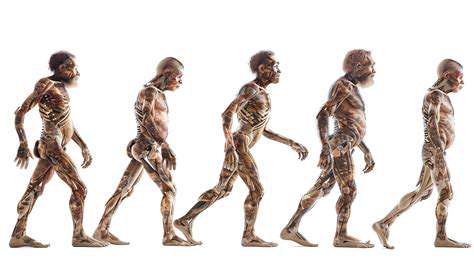
The Evolutionary Journey of the Hand
The human hand, a marvel of evolutionary engineering, is a testament to the power of adaptation. Its remarkable dexterity, enabling us to perform intricate tasks from crafting delicate objects to wielding powerful tools, is a direct result of millions of years of biological refinement. This remarkable adaptation is crucial to our success as a species, enabling us to manipulate our environment and develop complex societies. The hand's structure, from the delicate finger bones to the powerful wrist, has evolved to provide the precise control needed for our unique capabilities.
Early hominids, with their less developed hands, were limited in their ability to manipulate objects. Over time, changes in the shape of the hand bones and the development of opposing thumbs led to increasing dexterity. This evolutionary progression allowed for the creation of increasingly sophisticated tools and technologies, ultimately shaping the course of human history. The ability to grasp and manipulate tools proved essential to survival and allowed for the development of more complex social structures.
The Anatomy of Precision and Power
The human hand's anatomical complexity is a key component of its remarkable capabilities. The precision and power of the hand derive from a fascinating interplay of bones, muscles, tendons, and ligaments. The arrangement of these components allows for a wide range of movements, from delicate writing to forceful gripping. The intricate design of the hand, with its multiple joints and opposing thumb, allows for an unparalleled level of manipulation.
The opposable thumb, a defining feature of the human hand, is critical to grasping and manipulating objects. This unique feature allows us to hold and manipulate items with precision and control, unlike other primates. The precise placement of our thumb enables us to perform tasks that require a high degree of dexterity, which is essential to our ability to create complex tools and technologies. The intricate system of tendons and ligaments in the hand ensures coordinated movement and strength, enabling a wide range of functions.
The Hand in Modern Life
The human hand continues to be vital in modern life, impacting everything from the arts to industry. The dexterity and precision of our hands are essential in countless professions, from surgery and engineering to art and music. Our ability to perform intricate tasks with our hands is a cornerstone of human creativity and progress. The intricate movements our hands allow are essential to the development of cutting-edge technology and artistic expression.
From delicate embroidery to complex surgical procedures, the versatility and adaptability of the human hand are truly remarkable. The impact of the hand on human progress is undeniable. The hand's ability to control and manipulate tools and materials has shaped the world around us, from the construction of magnificent structures to the creation of innovative technologies. The hand's influence extends to our artistic expressions and social interactions. This remarkable instrument is intrinsically linked to our human experience.
Read more about How Hand Use Has Evolved Over Time
Hot Recommendations
- The Impact of the Digital Age on Hand Function
- The Role of Hands in Agricultural Innovation
- The Impact of Technology on Hand Artistry
- The Importance of Hand Care for Artists
- How Hand Control Enhances Robotic Surgery
- The Impact of Hand Strength on Physical Labor
- How Handwriting Influences Cognitive Development
- The Impact of Environmental Factors on Hand Health
- The Power of Hands in Building Community
- The Importance of Ergonomics in Hand Health


